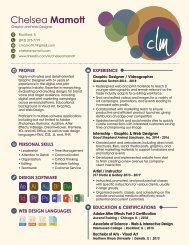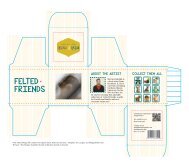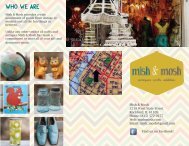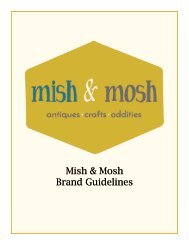Giambattista Bodoni
You also want an ePaper? Increase the reach of your titles
YUMPU automatically turns print PDFs into web optimized ePapers that Google loves.
Then in 1768 <strong>Giambattista</strong> <strong>Bodoni</strong> was invited<br />
by Duke Ferdinando of Bourbon-Parma to organize<br />
a printing house inParma, called la<br />
Stamperia Reale (Zack, 2014) . <strong>Bodoni</strong>’s job<br />
entailed him publicizing the house, and for this<br />
purpose he created specimen books the first<br />
being, Descrizione Delle Feste Celebrate In Parma<br />
L’Anno MDCCLXIX, which was only one in a<br />
long line of books he published (Famous Graphic<br />
Designers, 2015). Soon after, the house began<br />
printing fine editions of classical works such<br />
as Gerusalemme Liberata of<br />
Torquato Tasso and Homer’s literary work.<br />
Because of these publication’s <strong>Bodoni</strong> gained<br />
favor in the public’s eyes, which allowed him to<br />
open his own publication house called Officina<br />
<strong>Bodoni</strong>.<br />
MANUALE<br />
TIPOGRAFICO<br />
While operating his own publishing house <strong>Bodoni</strong><br />
started straying from Old-Style<br />
typefaces with very decorated details and was<br />
won over by the typographical theories of the<br />
French printer, Didot and the English printer,<br />
Baskerville. By 1787 <strong>Bodoni</strong> was printing<br />
typefaces without decoration and started creating<br />
modern typefaces of his own design.<br />
<strong>Bodoni</strong> Punchcuts- metaprintart.info<br />
Manuale Tipografico- luc.devroye.org<br />
Of the many books that he produced during this<br />
period, the best known is his Manuale<br />
tipografico (1788; “Inventory of Types”), a folio<br />
collection of 291 roman and italic typefaces,<br />
along with samples of Russian, Greek, and other<br />
types (Britannica, 2015). He used this manual<br />
to illustrate the four principles of type design:<br />
regularity, clarity, good taste, and charm.<br />
Twenty-seven years later a second edition of<br />
Manuale tipografico was released after an<br />
1840 ‘output inventory’ compiled by <strong>Giambattista</strong><br />
<strong>Bodoni</strong>’s widow that listed 25,491 punches<br />
and more than 50,000 matrices made by the<br />
prolific typographer, printer and punch cutter<br />
(Creative Review, 2013).<br />
TRANSITIONAL TO MODERN<br />
The self-titled typeface, <strong>Bodoni</strong> that we know today was created in 1798. In<br />
order to create this typeface <strong>Giambattista</strong> <strong>Bodoni</strong> made significant changes to<br />
previous letterforms by increasing the stroke contrast, increasing the sharpness<br />
of the serifs, and vertically aligning the axis. These changes were inspired by,<br />
John Baskerville, the first person to introduce typefaces with obvious differences<br />
between thick and thin strokes. These changes lead <strong>Giambattista</strong> <strong>Bodoni</strong> to<br />
stray from the Transitional fonts and create a new Modern font. <strong>Bodoni</strong> accomplished<br />
this by endlessly perfecting his type and always refining. His financial<br />
security provided by the Duke of Parma made this relentless obsession possible<br />
because of this he was able to labor over his letterforms and transcend them<br />
into art (Messmer, 2009).<br />
‘The letters don’t<br />
get their true<br />
delight, when<br />
done in haste &<br />
discomfort, nor<br />
merely done with<br />
diligence & pain,<br />
but first when<br />
they are created<br />
with love and<br />
passion.”<br />
- <strong>Bodoni</strong><br />
azquotes.com















